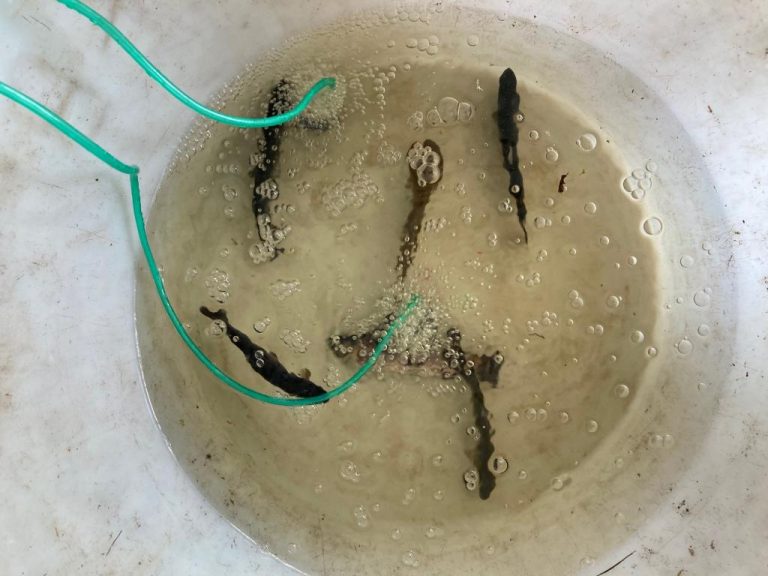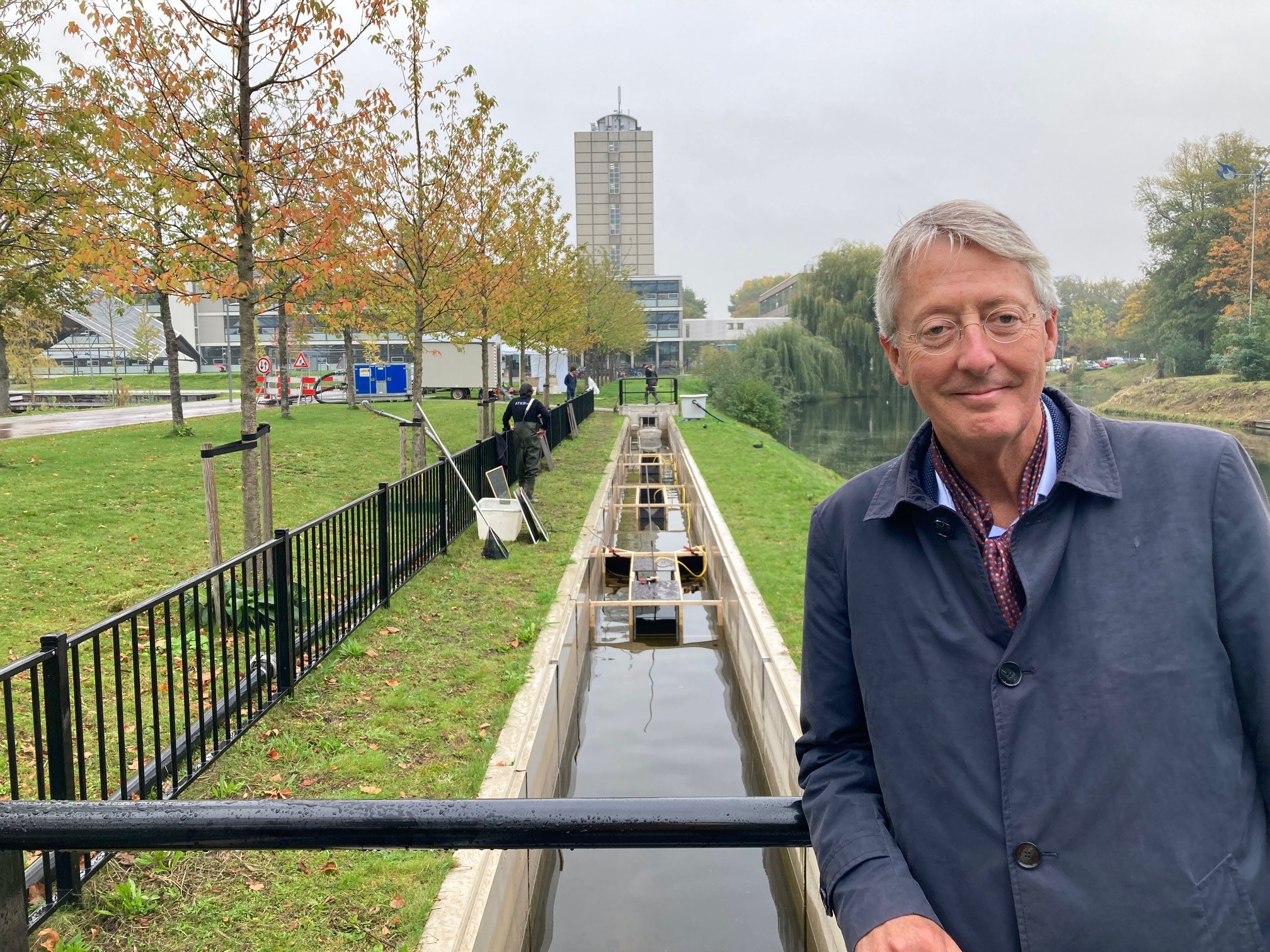Biologists, hydraulic engineers and dozens of fish were involved in a rare experiment on campus last week. The purpose is to protect fish from hydropower turbines.
Roelof Moll heads the research into a fish-friendly energy storage. (Photo: Jos Wassink)
What current speed is tolerable for fish? To find out, researchers have designed an experiment that took place on campus last week. Fish in an outdoor flume were exposed to two different current speeds for half an hour and then their stress levels were tested. There was also a test in still water to set a baseline.
After half an hour of swimming against the current, the young fish are taken out of the water and sedated. The length, weight and stress level (as reflected in the cortisol level) of each fish are measured. After this, the fish wake up from their doze in a bubble bath.
The speed of the current, about 1.5 times the body length per second, is near the limit of what fish can sustain says biologist Dr Andrea Miccoli from the University of Tuscia, Italy. Miccoli measures the level of the stress hormone cortisol in both the fish’s blood and its mucous. These values should tell what current speeds are tolerated by certain species of fish.
Pumped hydro
Hydraulic Engineer Roelof Moll (Faculty of Civil Engineering and Geosciences) coordinates the Alpheus project that aims to develop pumped hydro storage for lowlands. Not a biologist himself, he oversees the correct execution of the fish swimming experiment while braving the occasional autumn shower.
Pumped hydro is a well-known technology for energy storage in mountainous regions: when power production exceeds the demand, it may be used to pump water into a reservoir at a higher altitude. Water from the reservoir may be released through turbines when more power is needed, or when the power price is high – which is usually the same thing.
The Alpheus project on the other hand was set up to develop pumped hydro for lowlands. In these cases, the reservoir is not a mountain lake with a barrage but may take the shape of a deep well surrounded by, or next to, the sea. Pumping out the water uses energy, but when the water flows back into the emptied well through turbines, power is generated.
“But the technology should be environmentally sound,” says Moll. “The current flowing towards the turbines should not exceed the maximum swimming speed of fish, allowing them to escape from the grid at the inlet. We can reduce the current speed by enlarging the distance to the inlet, but we need to know by how much.”
Stressed fish
The results should help engineers design a fish-friendly offshore pumped hydro installation. The Alpheus project is a European Horizon 2020 research programme aimed at developing lowland pumped hydro energy storage for offshore wind parks, allowing a better match between changeable sustainable power production and fluctuating energy demand.
Of course, there are many other aspects to be dealt with, such as a limited height difference (‘head space’), full-cycle efficiency, and the optimal shape of the blades in the reversible pumps/turbines. If these type of design dilemmas in reversible pump/turbine technology (RPT) take your fancy, please refer to the Alpheus project website.

During the tests, no animals have been harmed or killed. All baby trout have been returned to the fish farm, later to be put into a nature reserve (Photo: Jos Wassink)
Do you have a question or comment about this article?
j.w.wassink@tudelft.nl


Comments are closed.